Sapphire GearBox Thunderbolt 3 Review: Discrete Graphics On The Outside
Why you can trust Tom's Hardware
More Performance Results: Vs. A Laptop, PCIe Scaling, and New Firmware
It’s all well and good to generate a wealth of test data using a desktop platform and add-in graphics cards for comparison purposes. After all, an available PCIe slot makes it easier to discern the performance loss attributable to Thunderbolt 3.
But we’re also sure that enthusiasts want to know how our desktop-class Radeon fares against a laptop built for mobile gaming. We had an Asus ROG Strix SCAR II on-hand with a Core i7-8750H and GeForce GTX 1060, so we added it to our charts. While the match-up isn’t apples to apples, it does provide a bit of context:
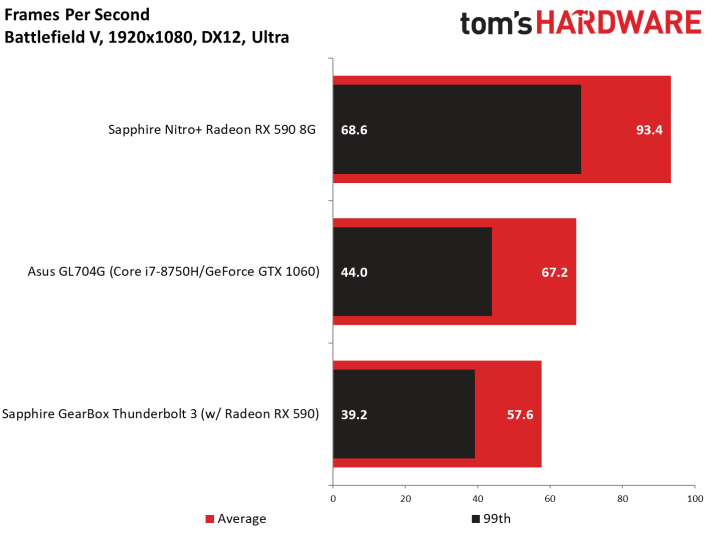
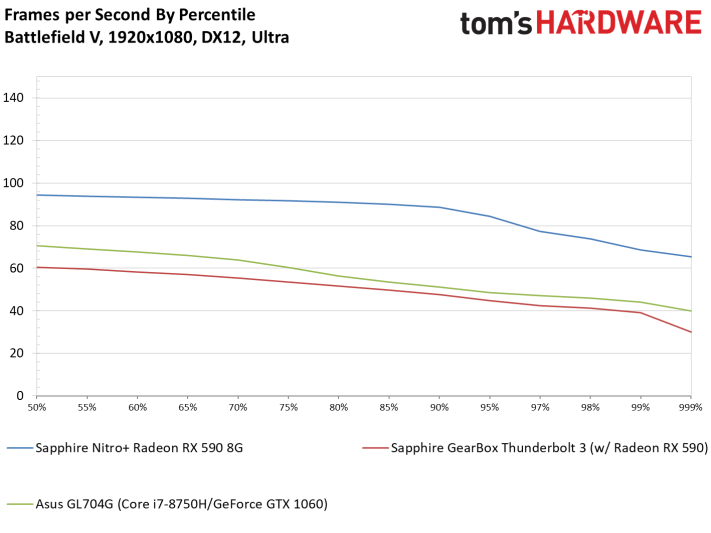
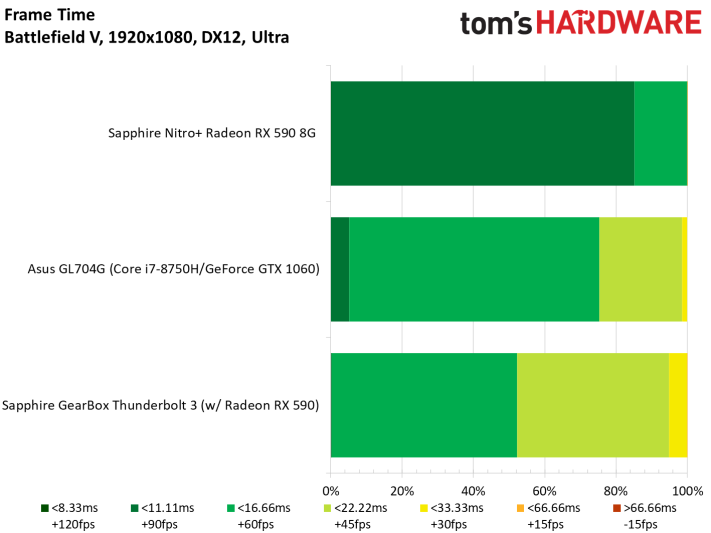
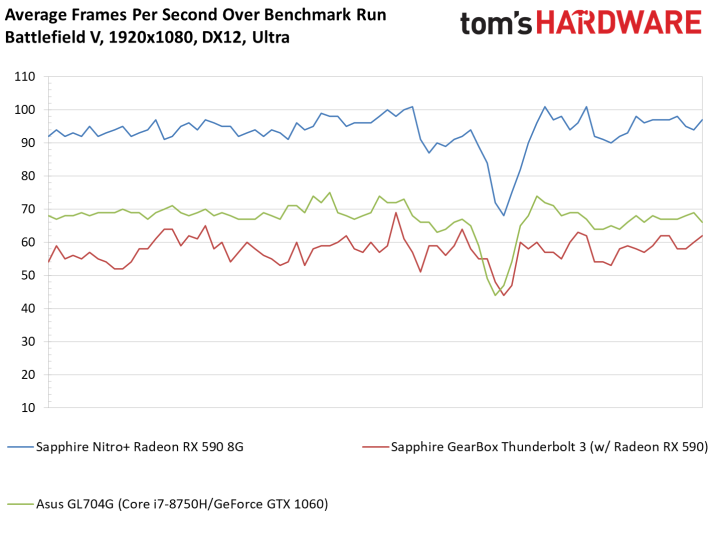
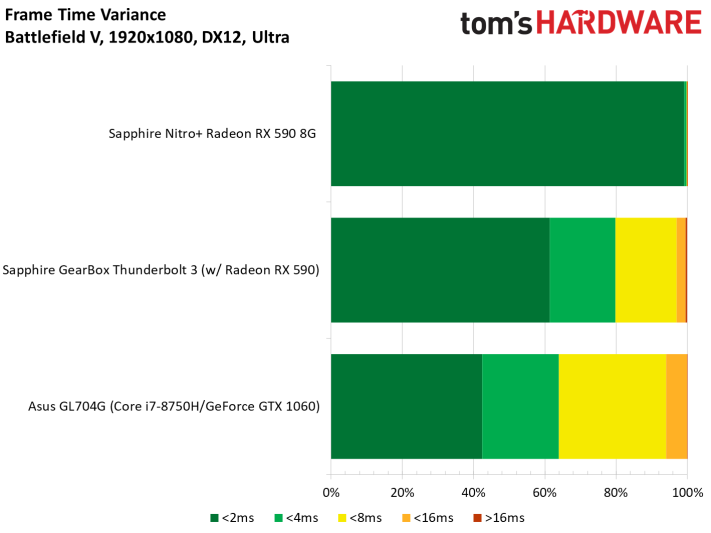
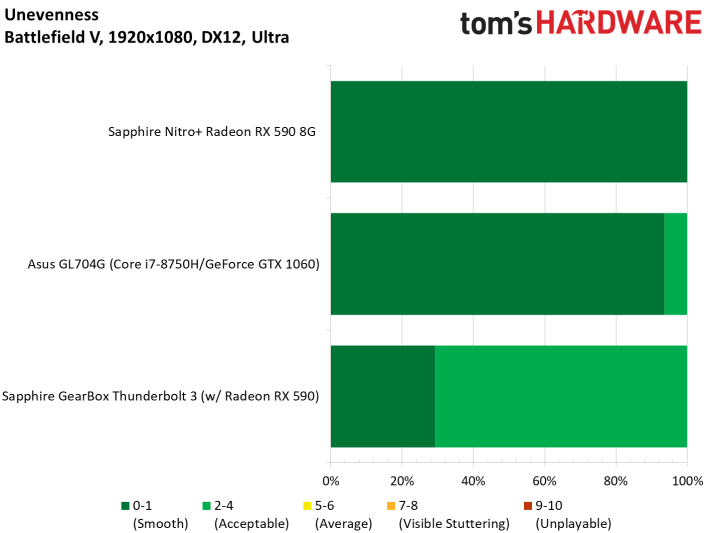
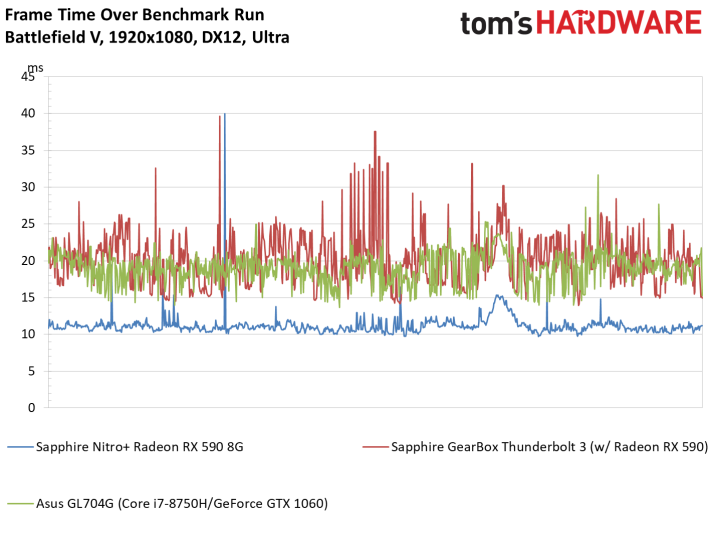

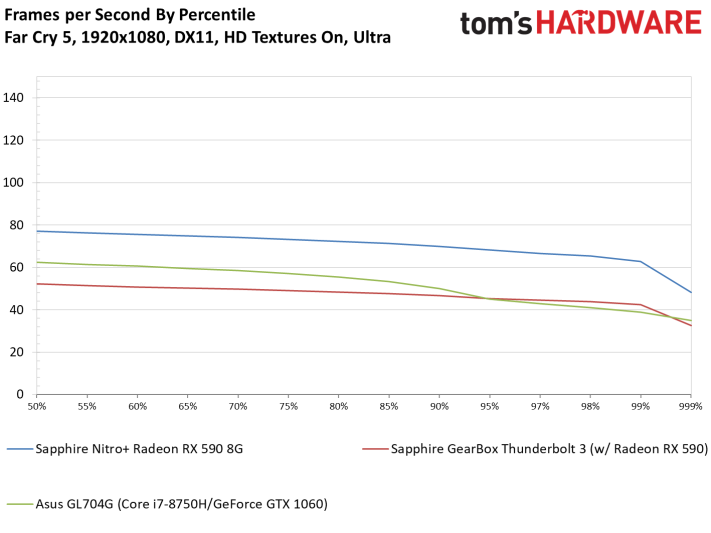
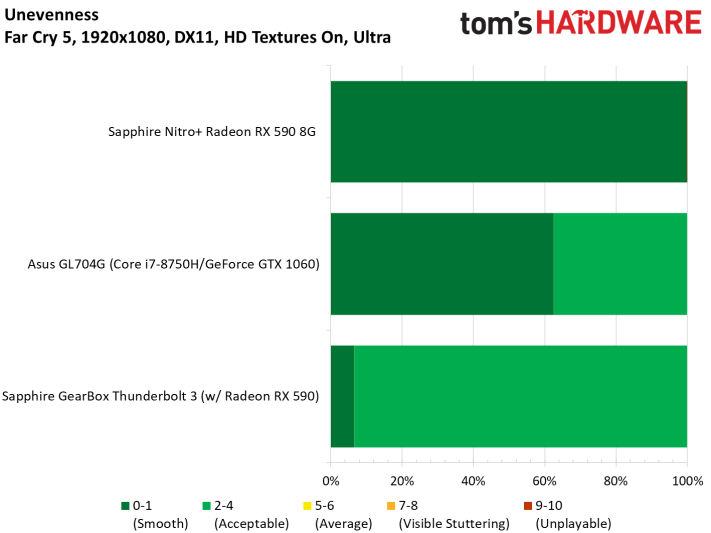
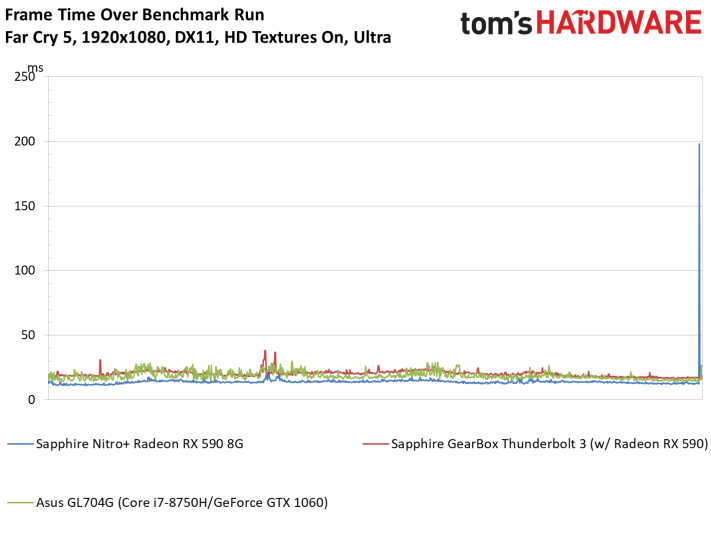
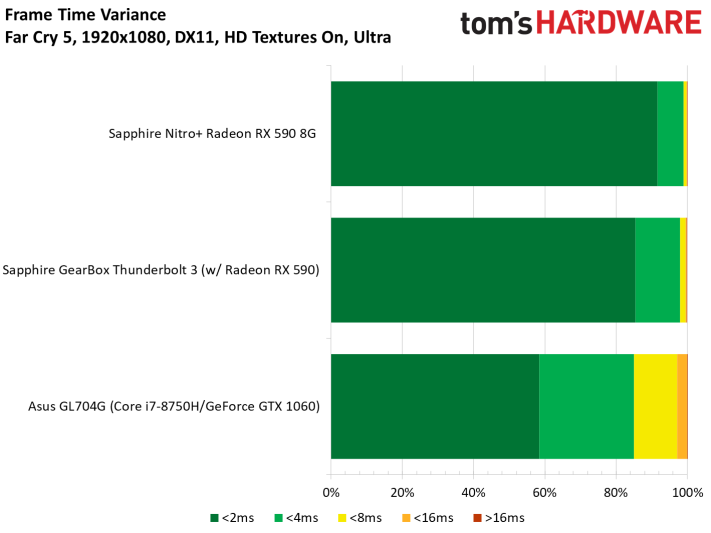
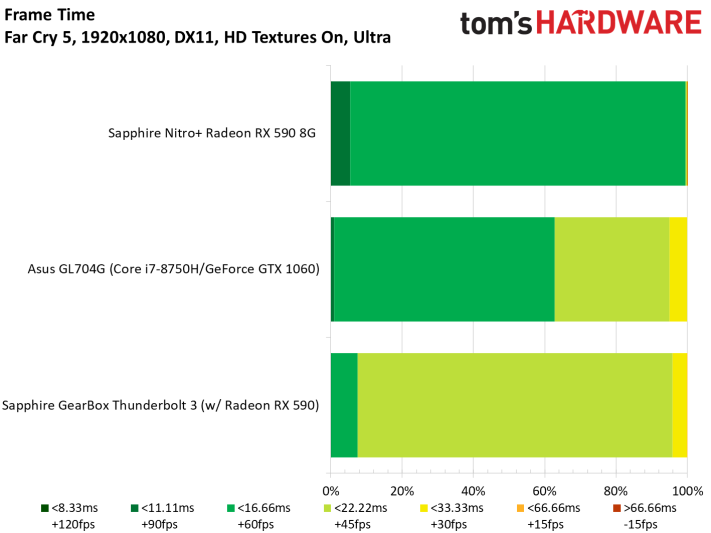
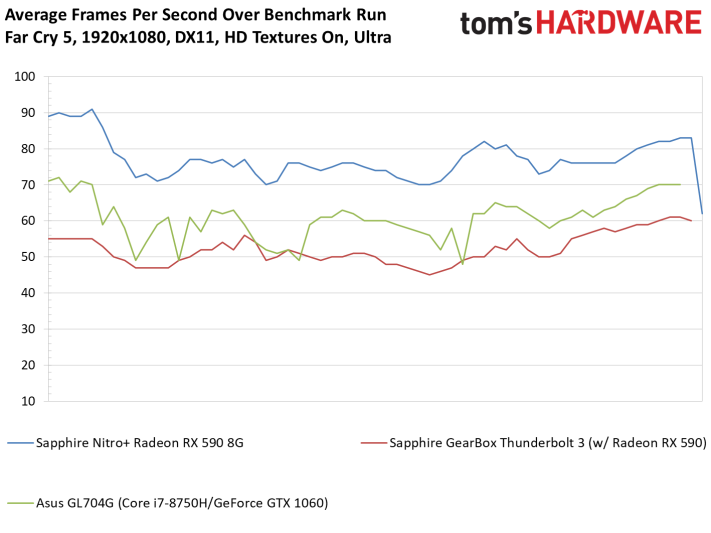

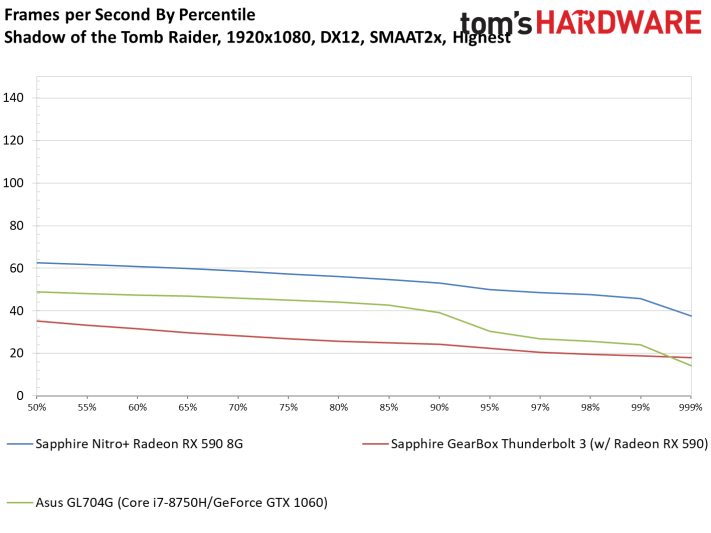


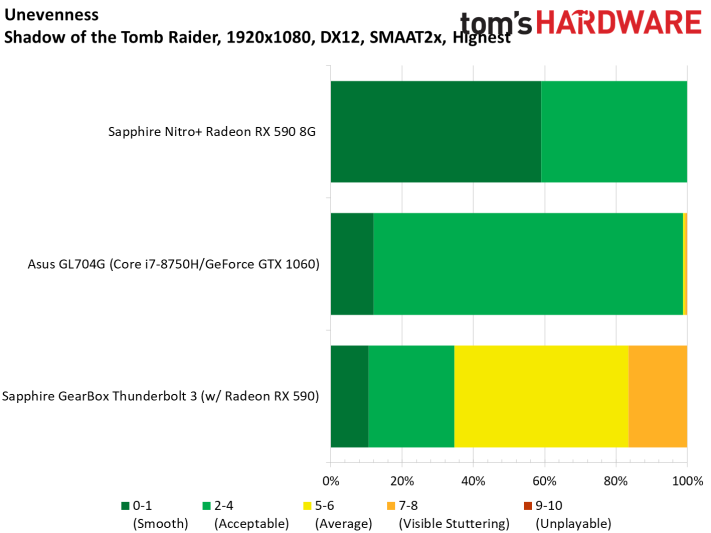
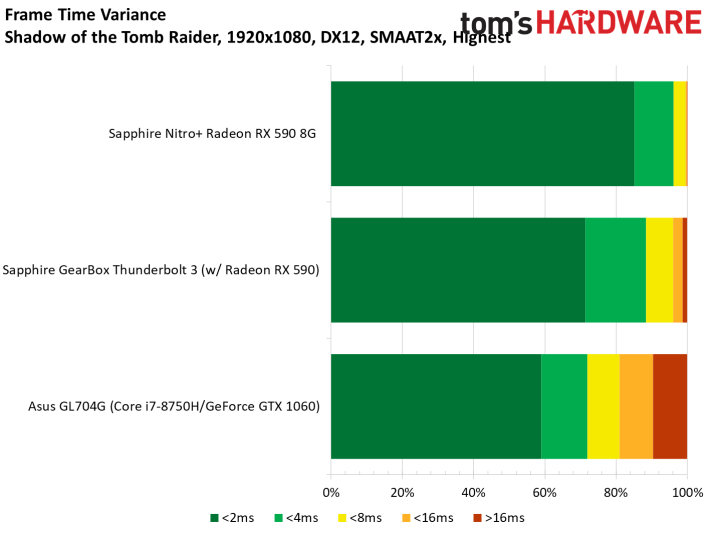

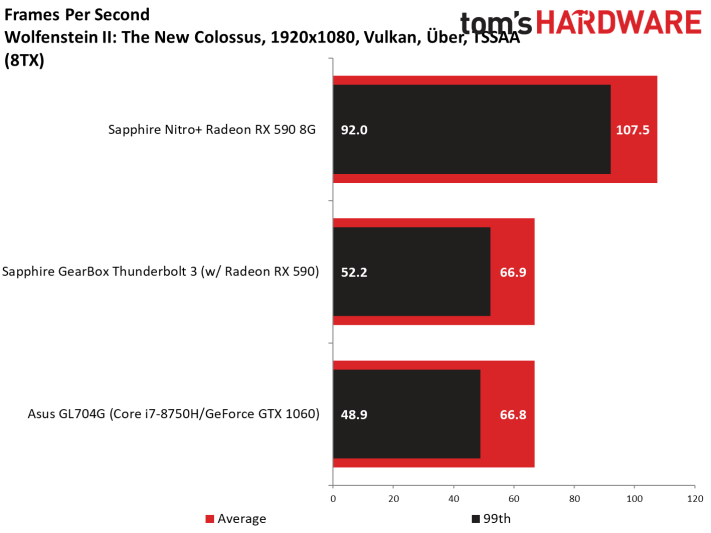


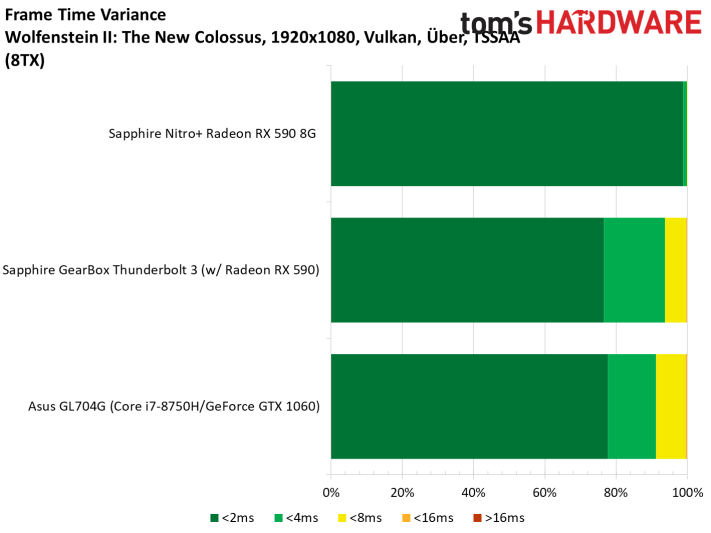
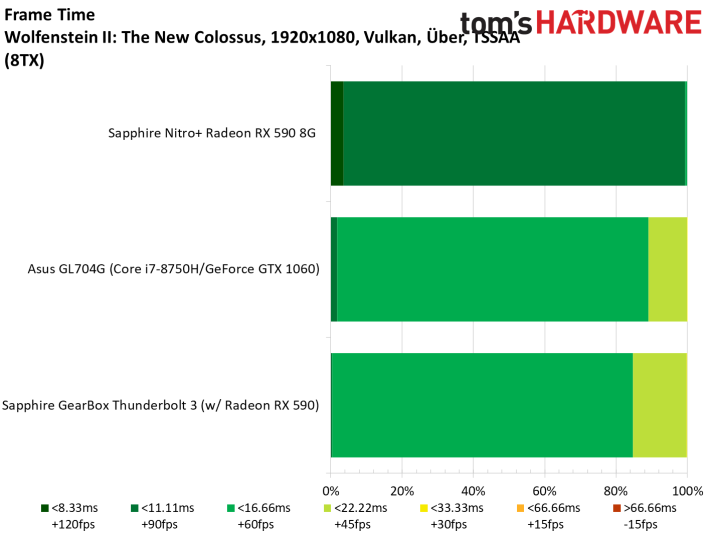
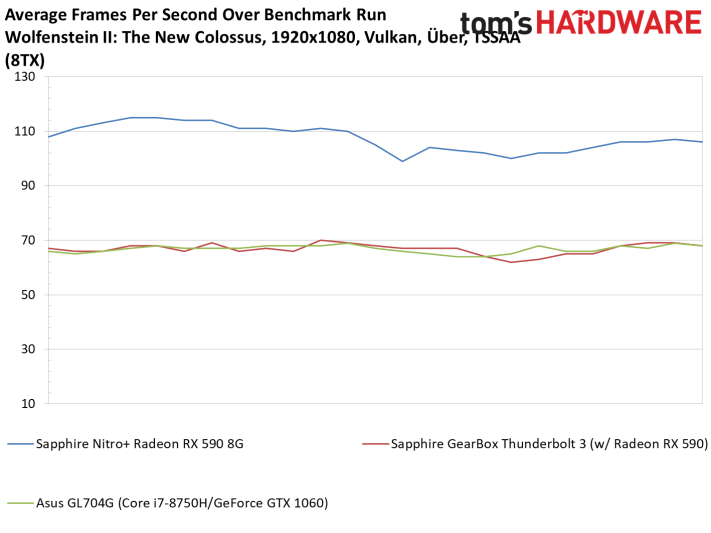
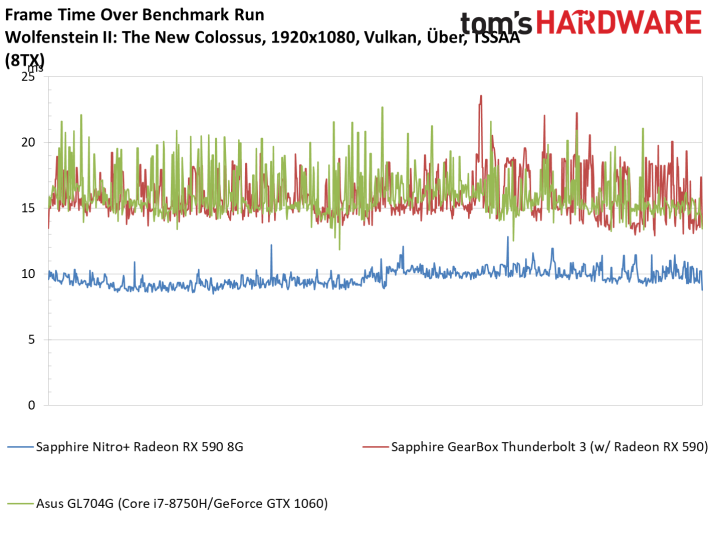
The Nitro+ Radeon RX 590 8G is notably faster than the mobile GeForce when it’s plugged into a 16-lane PCI Express 3.0 slot. Switching over to the GearBox really slows Sapphire’s card down, though. Is the issue related to a lack of PCIe bandwidth?
We dropped our Aorus motherboard to a Gen 1 link rate, emulating the throughput of a four-lane PCIe 3.0 connection.
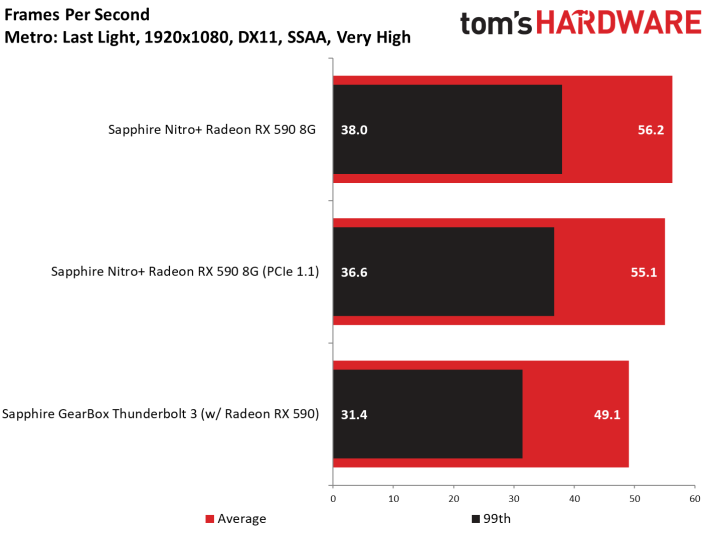
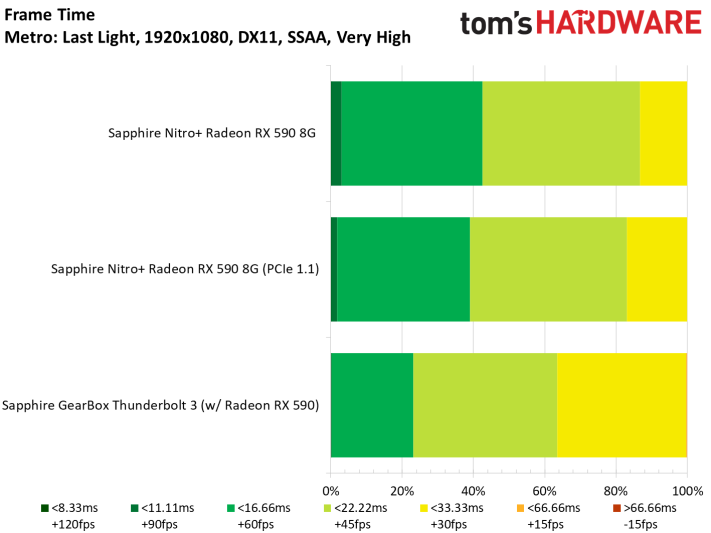
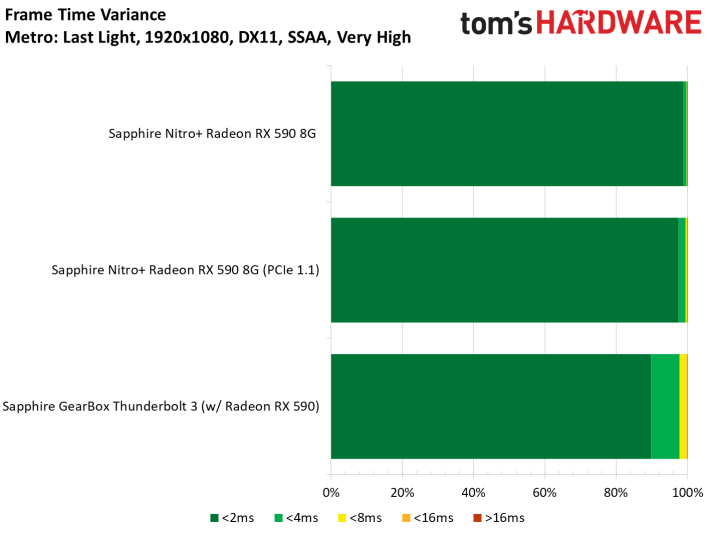
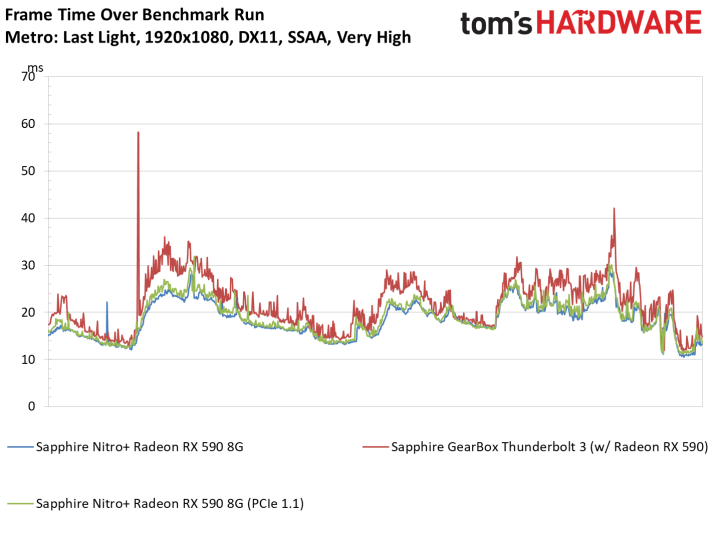

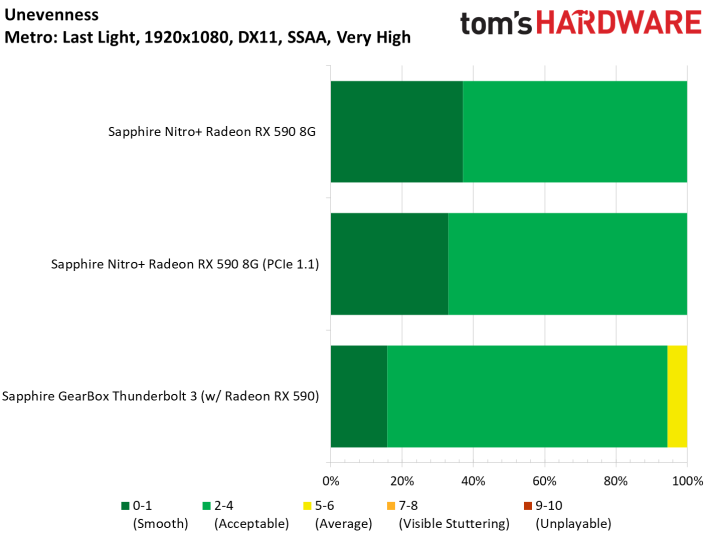
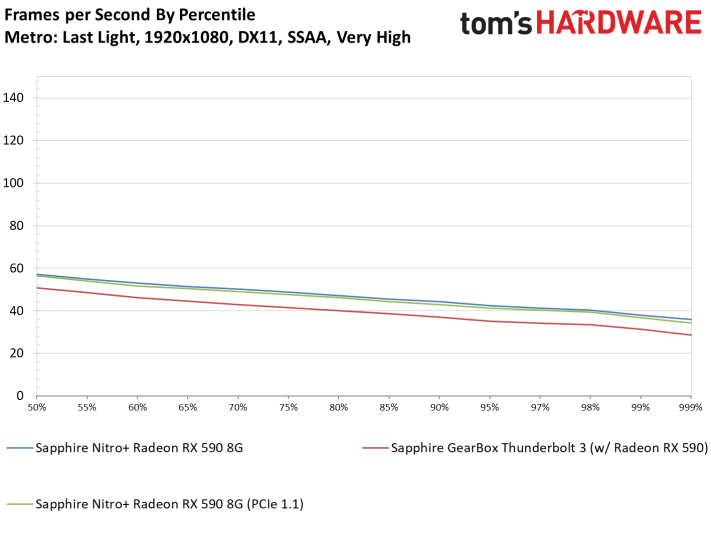
The GearBox originally lost 12.6% of its average frame rate under Metro: Last Light. But only a fraction of that would be attributable to the narrower PCIe link if Sapphire truly makes all of its bandwidth available to the graphics card.
Using a 16-lane PCIe 1.0a link rate on our desktop motherboard, performance fell just 2%. That’s more along the lines of what we would have expected.
Just to be sure that this wasn’t an AMD-specific issue, we popped in a GeForce GTX 1060 6GB and observed a 14.4% performance decrease in Metro, which was more than the Radeon.
Get Tom's Hardware's best news and in-depth reviews, straight to your inbox.
Our next call was to Sapphire for confirmation that what we were seeing was correct. According to the company, a -20% slow-down compared to a motherboard’s PCIe slot would be normal. So, we’re at least in the ballpark.
There was, however, a new firmware Sapphire was able to share. We got that installed and re-ran our tests:

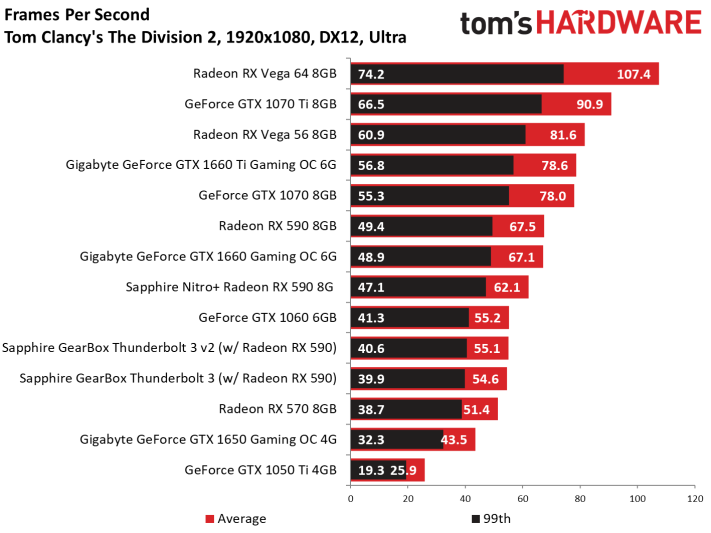



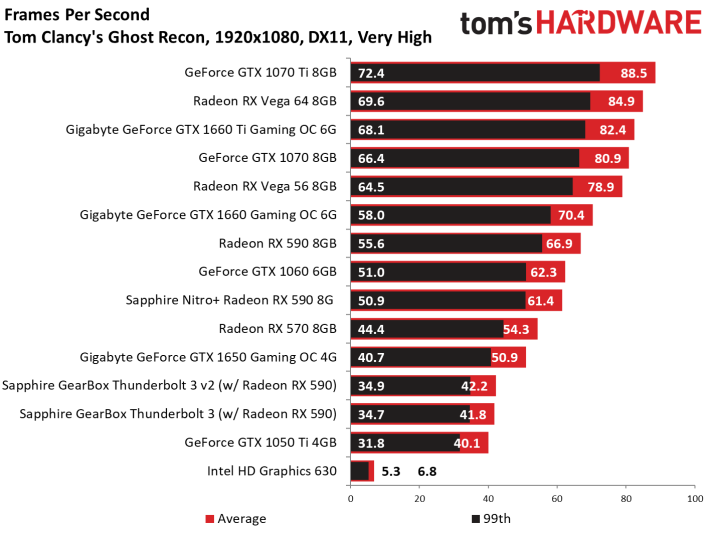
In every benchmark, the new firmware either helped or didn’t hurt. But it didn’t change the overall story. We were still looking at a significant performance hit after dropping our Nitro+ Radeon RX 590 into the GearBox.
MORE: Best Graphics Cards
MORE: Desktop GPU Performance Hierarchy Table
MORE: All Graphics Content
Current page: More Performance Results: Vs. A Laptop, PCIe Scaling, and New Firmware
Prev Page Performance Results: 1920 x 1080 Next Page Fan Speeds, Temperatures, Clock Rates, and GPU Load-
LordConrad "Discrete graphics, gigabit Ethernet, and USB 3.0 from one enclosure"Reply
This is not a Pro, because all devices connected to the enclosure will share the bandwidth of that single Thunderbolt 3 connection. Any use of the Ethernet and/or USB ports will steal bandwidth from your graphics card, which is already bandwidth starved from being on Thunderbolt. -
cangelini Reply
If it's on your desk, and you're always looking at it, an always-on light becomes a con. When it comes time to watch a movie or play a game, you'll want the ability to disable it.abhipw said:How can an always on blue light bar be a con?

